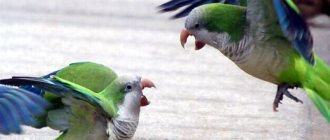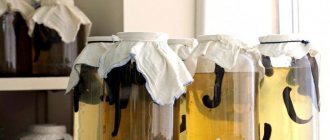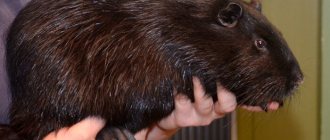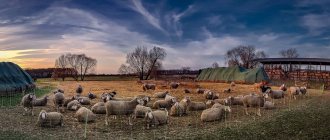The chinchilla is a small herbivorous rodent with thick and soft fur. It is not difficult to have such an animal as a pet. It is unpretentious in food and maintenance, and its life expectancy in captivity is on average 10-12 years. Exotic rodents can bring their owner not only positive emotions, but also a good income.
The value of chinchillas is due to their very thick and dense hair. The fur is so thick that it doesn’t even harbor parasites. Chinchillas do not shed, and their fur does not cause allergies. Therefore, its cost is much more expensive than the cost of arctic fox, mink or sable fur. The demand for items made from chinchilla fur is growing, while materials often have to be imported from abroad. Competition in the market of the Russian Federation and CIS countries is low, which significantly increases the chances of a successful business in raising and breeding these animals.
You can breed chinchillas at home for sale. Many people love these cute furry animals, but buying them at the bird market is dangerous. The cost of one individual fluctuates in a fairly wide range - from 1,000 rubles. up to 40,000 rubles, and sometimes higher. It all depends on the color, quality of fur, size or gender.
The most important thing about such a business idea is that there is no need to rent premises or hire workers. You can set up a mini-farm for growing chinchillas right at home.
Chinchilla breeding business – is it really possible to make money from it?
Making money from chinchillas primarily involves the production of valuable fur. In terms of cost, it is many times higher than other popular types of fur in our country. Due to the fact that the cultivation of these babies as a branch of industrial production has just begun to actively develop in our country, the demand for them significantly exceeds the supply.
High demand along with the lack of competition ensures the success of any enterprise. This means that chinchilla farming can safely be called an extremely profitable business.
A farmer I know indirectly confirmed the relevance of chinchilla farming.
According to his observations, 90% of Russian fur studios and specialized stores sell imported products. This dictates the broad sales prospects.
Every fashionable fur salon considers it its duty to offer chinchilla fur coats to the buyer. And high profitability, expressed in low cost and high income from its sale, will make you a constant and reliable partner of such stores.
To raise one male, you will need only a couple of hundred rubles, and the selling price of a 2-month-old animal varies from 3 to 15 thousand.
Brief overview of the market
The exact numbers are unknown, but in 2020 there was one large industrial enterprise, as well as just over a hundred small ones. But if we talk about fur, then most of these small enterprises should not be considered as competitors. The fact is that many people breed chinchillas solely for the purpose of selling live animals.
At one time there was a popular scheme that worked approximately according to the principles of network marketing. The idea was simple: raise animals and sell them to other farms that are just starting out. Of course, such enterprises had no long-term prospects.
The demand for chinchilla fur in Russia is much higher than the supply. But it’s worth making an important caveat: high-quality fur. Low-quality skins are in great demand in Russia (products made from them are much cheaper), but if we talk about the top segment, then this is in less demand. There are two reasons:
- in the studio, the highest quality skins are usually purchased only for specific orders;
- Fur products made from top category chinchilla fur are often preferred to be purchased from European manufacturers.
But in any case, it is better to focus on high quality skins. Even if in Russia the level of supply catches up with the level of demand (which is still a long way off), then farm products can always be sold to European countries.
Why are chinchillas bred?
For many ladies and their gentlemen, the word “chinchilla” is associated with the word “fur coat”. Of course, in most cases, representatives of this species are kept to obtain skins, but there are other areas of this business.
Among them are:
- breeding;
- meat production;
- as pets.
Breeding stock breeding
Offspring with favorable and pronounced characteristics primarily influence the success of the entire enterprise. Therefore, reproduction of a breed with the proper characteristics also becomes one of the sources of income.
When grading (evaluation based on a set of basic characteristics), the following are taken into account:
- the constitution;
- body type;
- state of the art;
- quality of fur.
After grading, the “successful” animal receives a pedigree. And animals with bad hereditary traits are culled, since good and productive offspring cannot be expected from them. On the contrary, by participating in mating, they will provoke a deterioration in subsequent livestock.
Meat and fur production
The main sources of income for any chinchilla farm are meat and fur.
Such products have a number of special advantages:
- Unlike other valuable rodents (arctic fox, sable, etc.), whose diet includes meat, chinchilla fur is odorless.
- Individuals do not require special attention. Experienced farmers even say: “You keep a rabbit, but sell a sable.”
- Meat is dietary. According to doctors, it helps in the treatment of sclerosis, tuberculosis and cancer.
- The skin is at least 250 times more valuable than rabbit fur. Due to the lack of shedding, she looks great at any time of the year.
For keeping as pets
Thanks to their aesthetic appearance, short six and good tolerance to allergy sufferers, keeping chinchillas as a pet is becoming a kind of trend.
On average, a chinchilla lives about 15 years. Therefore, unlike the case with parrots or ferrets, your child will not have to cry for a pet that has died of old age.
Chinchilla is a popular pet
Chinchilla genetics and fur quality
Breeding material is of primary importance. High-quality chinchillas for breeding are brought mainly from abroad, while individuals of the Danish line of the gray Standard and Black Velvet species cost at least 150 euros each, and transportation costs about the same (quarantine measures, entry into the Argus EIS, customs payments).
The dominant color colors of chinchillas are gray, black velvet, white and beige. Over the last century, approximately 40 mutations with different shades of color have been developed: pink, blue, purple, sapphire. It is clear that breeders are reluctant to part with such individuals; the price of a breeding chinchilla can be 20 times higher than the cost of the skin. The most common varieties in breeding are:
- Standard or Gray
(gray standard). The color intensity varies from almost black through all shades of gray to white. This creates a unique palette of fur coats and a play of halftones. All other mutations are derived from this color. - Black Velvet
(black velvet). These chinchillas are distinguished by a black back, striped paws and a transition zone on the sides to a white belly. The “velvet” gene is lethal; you cannot cross two animals with it: the offspring are born dead or nonviable. Beautiful shades are obtained in combination with white and beige chinchilla breeds. - Simply Beige.
Beige chinchillas have reddish eyes, pink ears and colors ranging from light beige to dark brown with a cool, steely sheen. This is a heterozygous variety and crosses well with chinchillas of any color.
Through experiments, varieties with a purple tint (Ultra Violet, Blue Diamond), chocolate (Pastel Ebony), and pink (Apple blossom, Apple blossom) were developed. However, the most common and popular are the basic natural colors: gray and velvet black.
In Russia, a breeding Standard can be purchased for about 15,000 a pair, but such chinchillas require a lot of breeding work. To breed your own tribe with high quality fur (at least 90 points), you need to get 3-5 generations, adding males of the Danish line and ruthlessly culling substandard individuals. Excellent chinchillas are bred in Latvia, where it is cheapest to bring them from.
The most common colors
Why does this idea have a future?
Owners of fur farms have long appreciated all the benefits of growing chinchillas.
Let's name the main advantages of the business:
- Relatively little competition in Russia.
- Constant growth in demand for products.
- High profitability and quick payback.
- The opportunity to start practically from scratch, while spending a minimum of effort and money.
- Year-round production.
The number of fluffy ones increases relatively slowly - about 6 babies per female per year. The reproductive age is about 10 years, but if we take into account culling and loss due to natural causes, the net increase is small.
Based on the above, even according to the most optimistic estimates, it will take our country more than 40 years to achieve the world average for fur sales. This means that there will not be overproduction on the Russian fur market for a long time. That is, the chinchilla breeding business will definitely be in trend for another 10-20 years.
Paradox! One of the main reasons for the high profitability of such a business is the slow reproduction of animals.
Breeding technology
In nature, chinchillas feel normal at temperatures up to +40°C, but for comfortable keeping in captivity you need to create the following conditions for them:
- humidity about 50%;
- temperature from +18°С to +20°С;
- room lighting at the rate of 60 W per 10 sq. m.;
- lack of direct sunlight;
- absence of drafts;
- clean water for drinking;
- sand bath for bathing;
- daily cleaning;
- weekly change of bedding in the cage;
- monthly sand change;
- disinfection of the premises once every 6 months.
On an area of 1 sq. m. can accommodate up to 3 individuals. Usually there is 1 male for 1 female, but it is also possible to form a family of 1 male and several females. Chinchillas begin to reproduce at the age of 7 months; they produce 2-3 litters per year, 1-2 cubs in each.
For example, a population of 2 males and 10 females can increase to 70 individuals after 12 months. The gender split is approximately equal. All the healthiest and most beautiful females remain on the farm for breeding. The best specimens are also selected from males, but in much smaller quantities. The remaining animals are sold to pet stores. With age, the litter of females increases to 5-6 individuals, and the herd grows faster.
Thus, in a couple of years, the animals will multiply to 300-350 individuals, and then you can start selling fur and meat.
How to breed chinchillas for sale - detailed instructions
Anyone can organize their own profitable business with chinchillas. This does not require any serious investment in equipment or special education. All you need is a small, ventilated and warm room for a nursery (it’s possible to breed the first generations even in an apartment), farm cages and a good breeding stock.
Breeding chinchilla
For your information! Individuals with 12 or more points according to the Royal system are usually considered breeding.
Where to start, and what steps to take on the path to your success?
Step 1. Draw up a business plan
To open your first farm, you will need a relatively small room, about 1 square meter per 10 individuals (the cells are placed in several tiers on top of each other). We also need a utility room to store feed and care equipment. Don’t despair: utility bills will be minimal, because heating and lighting are needed at low levels. Our children eat dry food (it is advisable to purchase special food) and good quality hay. And let's not forget about the good bedding and staff. We carry out disinfection twice a year.
For those who do not want to delve into mathematical calculations, but want to find out how much they can earn and understand whether it will be profitable for them to breed chinchillas, we offer a ready-made business plan.
Step 2. Set up a place for breeding animals
Before you start buying individuals, you need to properly prepare and arrange a place to keep them.
Advice! In order not to run randomly throughout the farm, immediately think about how best (ergonomically) to arrange the cages.
This video will help you understand the cell structure:
The premises in which you plan to keep pets must meet the following requirements:
- Have sufficient lighting, but without direct sunlight (lamp) rays.
- Receive a constant flow of fresh air, but without drafts.
- Have humidity within 50-70%.
- The internal temperature should be 8-18°C.
- Have good sound insulation.
Special conditions are created for growing chinchillas indoors
Step 3. Buy animals and food
For successful breeding, and subsequently quick marketing, experienced farmers purchase breeding animals.
Visually they should be:
- healthy;
- active;
- young;
- with thick fur of the desired color (fur of dark tones is especially valued on the international market).
The nutrition of our clients deserves special attention. In the wild, the diet of rodents is not particularly diverse. They eat cereals and legumes, young shoots, moss and bark.
Important! Chinchillas have a very demanding digestive system. Therefore, unfamiliar foods can harm their health.
If you are afraid to create a diet yourself, buy ready-made industrial feed. They are developed taking into account all the needs of furry ones and contain key ingredients and trace elements.
Step 4. Register a business
For our business to be legal, it must be registered. Beginners can register a personal subsidiary plot and thus avoid tax deductions (except for land taxes). Gradually increasing sales, switch to individual entrepreneur status. To do this, we register with the Federal Tax Service and choose the type of taxation that is beneficial for us - the Unified National Economic Tax with a 6% rate of net income.
In our case, no special licenses or permits are needed; only 2 documents are required:
- certifying ownership of the farm;
- registration sheet from the local veterinary service.
Step 5. Advertise finished products and look for sales routes
The growth and expansion of production requires the search for new markets. After all, local restaurants and companies engaged in tanning skins will most likely no longer be able to cover our growing volumes with their purchases. We will have to look for new ways of sales.
Advertising will help with this:
- external (billboards, bulletin boards, etc.);
- Internet (specialized communities and forums);
- Mass media (local and regional publications on agricultural topics);
- TV (on channels about business and farming).
Idea! Do you want to quickly find those who buy both furs and meat? Operate through trading platforms such as OLKH.
Farm for growing families
A chinchilla farm is not just a room where fur-bearing animals live and breed. A farm is a complex with its own special technology for increasing the number of livestock.
Activities on the farm
The main and important task of every fur entrepreneur is to ensure comfort for animals, and the ability to perform all the necessary work on the farm, and adhere to the basic technology of raising fur animals, in turn, as experience shows, it dramatically increases fur production, facilitates maintenance and increases the level of zootechnical work and mechanization of production processes.
Naturally, the cleanliness on the farm must be impeccable. Equipment, cages and trays with shavings should be clean and fresh, and drinking bowls should always be filled with clean water. All animals should be subjected to a general visual inspection every day during feeding, while paying attention to the amount of food left in the feeder, and to the external signs of the animals.
If the animal eats normally and is in normal physical activity, and there are no external signs that would indicate impairment or injury, the animal should not be disturbed. A thorough inspection is carried out once a week, while causing them as little inconvenience as possible, because failure to do so can lead to stress for the animal or loss of certain areas of fur, which is of course undesirable for the business as a whole. Depending on the time of year, cages and equipment are cleaned with disinfectants. After completing the procedure, new bedding is poured into the cage.
The bedding is used from coniferous trees, without using hard species, for example, oak. The litter is replaced every 7-10 days. To clean and improve the quality characteristics of the fur, dust baths are used, which help eliminate dirt and secretions of the sebaceous glands from the skin, as well as hair that has fallen out. In nature, animals use volcanic dust; in industry it has been replaced by zeolite. The bathing suits are built into a cage and open for swimming 2-3 times a week for 10-15 minutes. Healthy animals react quickly to the opportunity to swim, quickly grasp and flounder in the water with pleasure. Regular bathing cannot be replaced. If waste or other contaminants or the smell of ammonia appear in the sand, it must be sifted through a sieve or completely replaced with a new one.
The main additive is a disinfectant that contains talc; it is hygroscopic, removes fat from the skin well, does not change its color and gives elasticity, and also contains substances that prevent the occurrence of mycoses, that is, fungal diseases. People are repeatedly asked about the water that should be contained in drinking bowls, what type and origin. Water for use on a chinchilla farm must be purified, an analogue for human needs, that is, water used for cooking. As a rule, this is water from purified sources or boiled. As experience shows, the branched watering system is effective, but has its drawbacks: first of all, the invisible passage of water, and the impossibility of controlling the watering of each individual and the breeding stock as a whole. The flow of water also stops. Another disadvantage of such a system is the general danger of water, that is, water is supplied from a single container. Drinkers are cleaned every 10 days.
Farm video
Video from the chinchilla farm on our channel
The video shows a report from a home farm of 300 individuals. The farm specializes in breeding chinchillas.
Financial plan
Any successful business begins with a scrupulous study of the chosen business, analysis of the potential market and drawing up a financial plan. Thanks to him, the owner sees exactly what he should focus his attention on first and what he needs to prepare for.
We bring to your attention an example of such an analysis, designed to obtain the first litter of 40 individuals (10 females and 30 males) with one standard litter in six months (3 puppies):
| № | Expense item | Amount (thousand rubles) | Note |
| 1. | Equipment and tools | 23 | Cages, drinking bowls, baths, automatic feeders and other related equipment |
| 2. | Livestock | 120 | The cost of one breeding individual is about 3,000 rubles. |
| 3. | Rent | 60 | If you have your own premises, the costs are zero. |
| 4. | Major and current repairs | 15 | The main costs go to setting up lighting and ventilation |
| 5. | Nutrition | 20 | When preparing it yourself, the final cost is significantly lower. |
| 6. | Veterinarian remuneration | 10 | If you are self-employed, there is no need to pay for other hired labor |
| TOTAL: | 248 |
It turns out that without the need for subsequent purchases of individuals, our expenses will be about 248,000 - 120,000 = 128,000 rubles. for one generation. This means that with the sales price of one copy being 3,000 rubles. within 2.5-3 years, production fully pays for itself and begins to make a profit.
Possible risks
Any business has its downsides and pitfalls. Chinchilla is no exception.
Let's consider the main risks that may arise on the path to success:
- Diseases. Although the risk of disease in the entire livestock is relatively small (chinchillas have strong immunity), there is always a danger of an epidemic due to errors in care and feeding.
- Poor quality young stock. There are many offers on the market for the sale of fluffy animals. Their prices range from $50 and up. And here lies the catch: it’s quite difficult to find quality specimens in Russia. And little-known farms offer animals that, despite their poor pedigree, are strongly reminiscent of breeding animals in appearance.
- Selection of feed. Nutrient mixtures offered by domestic manufacturers are not always of high quality: rabbit food is often sold under the guise of chinchilla food. Therefore, you will have to either supplement it with additives yourself, or buy expensive imported ones.
- Implementation. If you have not thought through in advance where you will sell the offspring, then problems with sales will arise immediately after the appearance of the first offspring.
Harvesting and processing of skins
To ensure the quality of chinchilla fur, preparation and proper execution of slaughter, removal, straightening and dressing are of great importance. The animals are slaughtered in the winter-autumn period, after the end of molting. Optimal time: December–March. Before slaughter (at the age of 6 to 9 months), they are kept in cages without houses (so as not to spoil the fur), reducing the temperature to 10 ℃. Some breeders recommend up to 4-6 ℃, but this is fraught with the development of diseases. Animals are caught with a net or by hand, without being lifted into the air. This causes stress in chinchillas, which leads to drooping of the coat.
The main methods of slaughtering chinchillas:
- electric shock - a voltage of 127–220 V is enough to kill a chinchilla within 1-3 seconds;
- by twisting the cervical vertebrae - death occurs instantly;
- using chemicals - dithiline or ether is injected with a syringe.
After slaughter, the chinchilla is laid out in a cold room on mesh racks or hung on loops to harden for 2-3 hours. The time required to remove the skin of a chinchilla from an experienced specialist who has processed more than a thousand carcasses is approximately 10 minutes, while it may take an hour for a beginner.
Primary processing includes the following procedures:
- Withdrawal.
Before removing the fur, remove dirt from it with a cotton swab and comb it. It is removed in three ways: with a stocking (from the head), a pipe from the rump, and a layer (rug). - Edit.
The skin is fixed on a board (20x40 cm), smoothed in the direction from head to tail. The ratio of length to width should be 3:1. - Drying.
Dry on a felt backing, secured with pins, fur side down. The process lasts 3–4 days dry. In a well-ventilated room at T 4–10 ℃. After two days, the skins are removed from the substrate and hung through the eye holes. - Combing.
Remove fat from the hair using small sawdust, slightly moistened with a solution of carbon tetrachloride (poisonous), blow or dry, shake well and comb with a comb. - Canning.
Previously, a mixture of salt, alum and white maple sawdust was used for this purpose. Fresh-dry canning is now recommended. Dry skins cleaned with sawdust are stacked, skin to skin, interspersed with paper.
Separated by a layer of paper, chinchilla skins are stored in boxes with holes in a ventilated area, protected from excess moisture, sunlight and moths. At the first opportunity they are sent for processing or sale. Only with careful adherence to technology can you obtain fur of demanded quality.
Is it profitable to open a chinchilla farm - expert opinion
We have already talked a lot about the chinchilla business. But how do things work in practice? Let's find out from our good friend Andrey (31 years old), who has been raising and selling fluffy animals for more than three years.
“My business started, as they say, out of the blue. I used to just be into rodents, so I decided to buy a family of chinchillas as pets. I gave away the first offspring to relatives. It was they who suggested that I contact a pet store and negotiate the sale of subsequent litters. And now, for the fourth year now, I have been seriously studying these cute creatures. Now I sell them to restaurants and fur salons.
There were almost never any problems with the content. Sales have been established for a long time. True, I had to hire an assistant: since childhood I have not been able to watch animals being killed. Today, the funds from their sale not only cover all the needs of the farm, but also allow me to live comfortably,” Andrey shared.
Business registration
Chinchillas are undemanding and easy to grow at home. Since the first offspring will need to wait a long time (the female becomes an adult at 9 months), you can start a business without registering with government agencies. Developing your business and increasing volumes, you need to move on to obtaining permits.
The main advantage of opening a farm is that, in addition to young animals, you can sell expensive skins or finished products for breeding. To register a farm you will need:
- application for registration (Form 21002);
- receipt of payment of state duty (800 rubles);
- documents identifying the founder;
- a notarized agreement on the creation of an organization (if there are several founders).
Remember
- It is worth buying only breeding individuals.
- Before purchasing animals, create the conditions they need.
- Carefully study the composition of the feed, or better yet, prepare it yourself.
- Don't skimp on veterinarian services.
- Pay attention to advertising.
To reduce them to a minimum, create a detailed business plan or use ours. And remember - your own farm can please you not only with an abundance of beautiful fluffies, but also with a stable, ever-growing income!
(
2 ratings, average: 5.00 out of 5)











